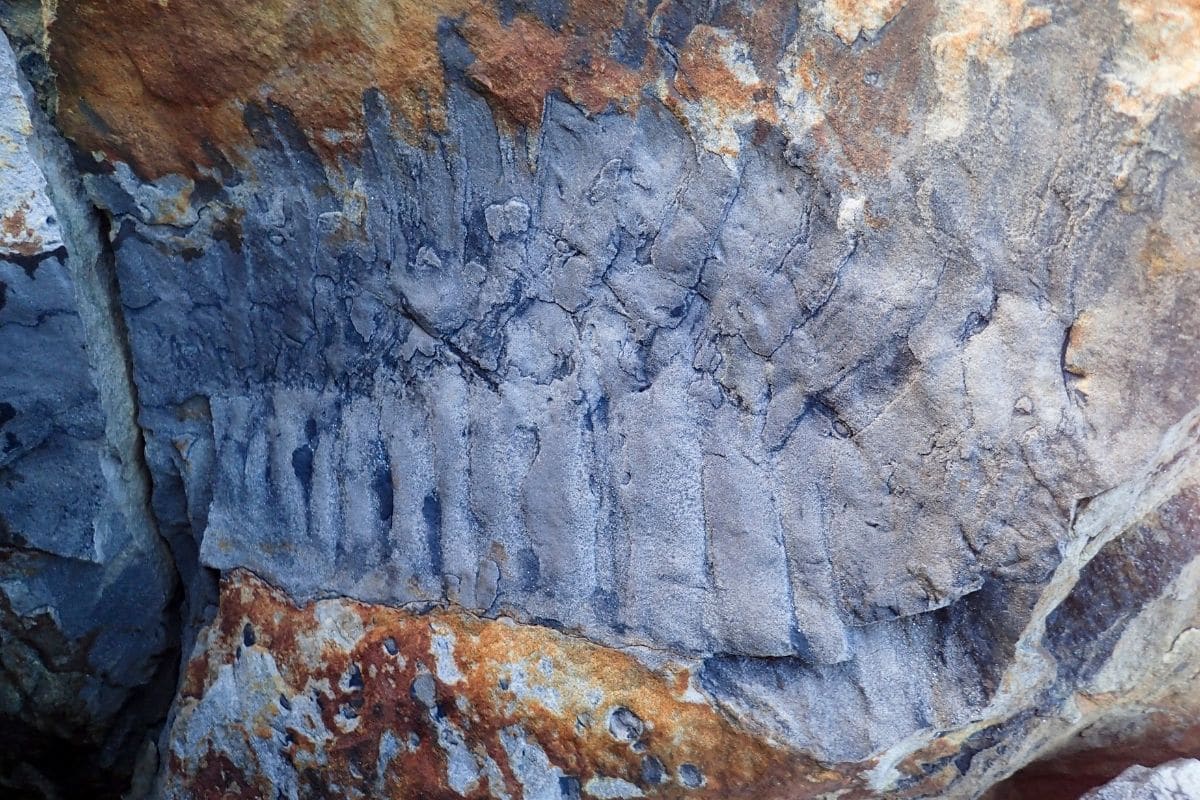
The terrifying beast is the oldest and largest Arthropleura ever found.
Quite a few giants have passed in review in the history of the earth. And in this prestigious list we can certainly include the Arthropleura do not forget; an extinct genus of centipedes that lived during the late Carboniferous. Researchers have now come across a very exceptional specimen. Because on the beach of England, the fossil remains of the oldest and largest were lying around Arthropleura that has ever been found.
As big as a car
It is a fairly large centipede to say the least. Because the animal can compete with a real car! The Arthropleura lived during the Carboniferous period, believed to be about 326 million years ago—more than 100 million years before the dinosaur age. It also consists of several segments, similar to modern centipedes. The researchers hypothesize that the beast in its entirety was about 2.7 meters long and weighed around 50 kilograms.

Reconstruction of the giant centipede Arthropleura, who lived on Earth 326 million years ago. Image: Neil Davies
That researchers got their hands on the remains of the bizarre centipede is in itself a miracle. The fossil was discovered in a large block of sandstone that had fallen from a cliff on the beach at Howick Bay in Northumberland, England. “It’s really a fluke,” said researcher Neil Davies. “The way the boulder had fallen and burst open made the fossil perfectly visible. It was then discovered by one of our PhD students who happened to be walking by. The fossil was so big, we had to carry it with four of us. It was an incredibly exciting find.”
Arthropleura lived on Earth for about 45 million years and was mainly found around the equatorial region. It eventually died out during the Permian. The cause of this is uncertain, although it could have been due to two factors. On the one hand, it could be due to global warming and dry and arid conditions that they were unable to cope with. On the other hand, the emergence of reptiles may have played tricks on the same prey and soon dominated the same habitats.
The researchers studied the fossil remains in detail. And that leads to some new discoveries about the habitat and evolution of Arthropleura.
Insights
Previous studies had suggested that the animal lived mainly in swamps. But this newfound specimen appears to have had a preference for coastal forests. In addition, the large size of the centipede has previously been attributed to a peak in oxygen during the late Carboniferous and early Permian. But because the newly discovered fossil dates from a time before that peak, the researchers suspect the presence of a lot of oxygen may not be the only explanation.
Nutrient-rich diet
To get such a large size, Arthropleura have consumed a fairly nutrient-rich diet, the researchers believe. “While we can’t be sure what they ate, there were plenty of nutritious nuts and seeds available at the time,” Davies explains. “In addition, they may have even been predators that occasionally feasted on other invertebrates and even small vertebrates, such as amphibians.”
Third fossil
The newly discovered fossil is only the third Arthropleura that has ever been found. The other two Arthropleurafossils have been excavated in Germany and are many times smaller. Although the newly discovered specimen contains the largest fossil skeleton of a Arthropleura As far as – and this shows that terrifying centipedes the size of cars roamed the former Great Britain – there is still much to learn about these wondrous creatures. “Finding giant centipede fossils is rare,” Davies says. “That’s because when they die, their bodies fall apart. Unfortunately we haven’t found a fossilized head yet. That is why it is difficult to know everything about them.”
However, thanks to the study, we now know that Arthropleura was the largest known invertebrate animal of all time. They were even larger than primordial sea scorpions, which until recently were the largest known arthropods. They must therefore probably have scared many people…
Source material:
“Millipedes ‘as big as cars’ once roamed Northern England, fossil find reveals” – University of Cambridge
Image at the top of this article: Neil Daves